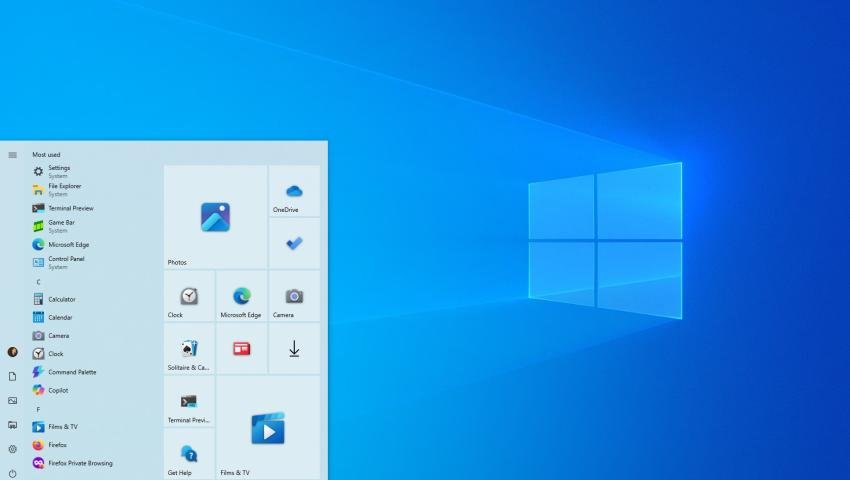October 14, 2025, marks the end of support for Windows 10, a widely used operating system that has powered millions of devices since its launch in 2015. After this date, Microsoft will no longer provide security updates, bug fixes, or technical support for Windows 10.
For businesses and individual users alike, this transition presents both challenges and opportunities to enhance security and performance. In this article, we’ll explore what the end of support means and provide actionable steps to protect your systems moving forward.
Understanding the End of Support
Microsoft’s end-of-support (EOS) policy means that Windows 10 will no longer receive updates to address security vulnerabilities, software bugs, or compatibility issues. This leaves systems running Windows 10 vulnerable to new cyber threats, as hackers often target unsupported software. For businesses, this can also impact compliance with data protection regulations, while individual users risk data breaches and system instability.
The good news? You have options to stay secure and productive. Whether you’re a business managing a fleet of devices or an individual user, taking proactive steps now will ensure a smooth transition and robust protection.
Why Act Now?
Continuing to use Windows 10 after October 2025 increases risks, including:
- Security Vulnerabilities: Without patches, new exploits can compromise your data.
- Compliance Issues: Businesses may fail to meet industry standards like GDPR or HIPAA.
- Performance Degradation: Unsupported software may struggle with modern applications.
- Limited Support: Troubleshooting issues will become harder without Microsoft’s assistance.
To mitigate these risks, here are five key steps to protect your systems.
1. Upgrade to Windows 11
The most straightforward way to maintain security and support is to upgrade to Windows 11, Microsoft’s current operating system. Windows 11 offers enhanced security features, including Secure Boot, TPM 2.0, and improved protection against ransomware. Before upgrading, ensure your device meets the minimum system requirements, such as:
- A compatible 64-bit processor
- 4 GB of RAM (8 GB recommended)
- 64 GB of storage
- TPM 2.0 and Secure Boot enabled
For businesses, plan the upgrade in phases to minimize disruption. Test critical applications for compatibility and leverage Microsoft’s deployment tools, like Windows Autopilot, to streamline the process. Individual users can use Microsoft’s PC Health Check tool to verify eligibility and follow the upgrade wizard in Windows Update.Pro Tip: If your hardware isn’t compatible with Windows 11, consider investing in new devices to ensure long-term support and performance.
2. Explore Extended Security Updates (ESU)
For organizations unable to upgrade immediately, Microsoft offers an Extended Security Updates (ESU) program for Windows 10. This paid service provides critical security patches beyond the EOS date, giving businesses more time to transition. While pricing details are available through Microsoft partners, ESUs are typically a temporary solution, as costs increase annually, and support is limited to security updates only.Note that ESUs are primarily designed for enterprises, not individual users. If you’re a small business or consumer, upgrading to Windows 11 or replacing outdated hardware is often more cost-effective.
3. Strengthen Cybersecurity Practices
Whether you upgrade or opt for ESUs, bolstering your cybersecurity is critical. Adopt these best practices:
- Use Robust Antivirus Software: Install reputable antivirus or endpoint protection solutions to detect and block threats.
- Enable Firewalls: Ensure your firewall is active to prevent unauthorized access.
- Regular Backups: Back up critical data to an external drive or cloud service to mitigate ransomware risks.
- Update Applications: Keep all software, including browsers and productivity tools, up to date to close security gaps.
- Employee Training: For businesses, educate staff on phishing, social engineering, and safe browsing habits.
4. Consider Alternative Operating Systems
If upgrading to Windows 11 isn’t feasible due to hardware limitations or cost, explore alternative operating systems like Linux distributions (e.g., Ubuntu or Linux Mint) for personal use. These are often free, secure, and receive regular updates. However, ensure compatibility with your software and workflows, as Linux may require a learning curve for some users.For businesses, switching to a non-Windows OS may involve significant retraining and application migration, so weigh the costs and benefits carefully.
5. Plan for the Future
The end of Windows 10 support is a reminder to future-proof your technology strategy. For businesses, adopt a lifecycle management approach to ensure hardware and software stay current. For individuals, regularly check for OS updates and plan hardware upgrades every 4–5 years to avoid being caught off guard by EOS deadlines.Additionally, consider cloud-based solutions like Microsoft 365, which provide continuous updates and reduce reliance on local operating systems. Virtual desktops or cloud-hosted environments can also minimize risks associated with unsupported systems.
Taking the Next Steps
The end of Windows 10 support is a pivotal moment to reassess your security and technology strategy. Start by evaluating your devices’ compatibility with Windows 11 and planning your upgrade. If immediate upgrades aren’t possible, explore ESUs or alternative solutions while strengthening your cybersecurity posture.At Amilma Digital, we’re committed to helping you navigate this transition. Our team offers tailored solutions, from upgrade planning to advanced security services, to keep your systems secure and compliant.
Don’t wait until October 2025—act now to protect your systems and stay ahead of the curve.









 u Bosni i Hercegovini
u Bosni i Hercegovini